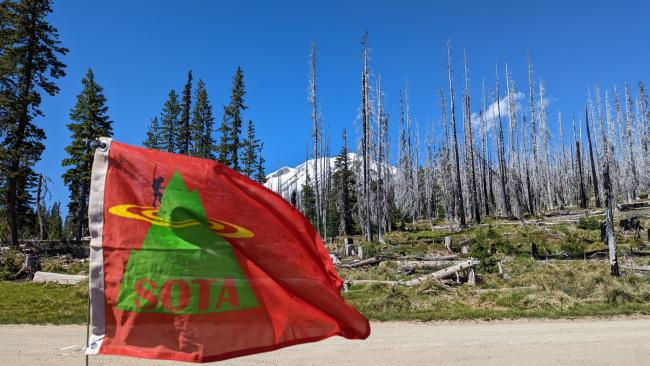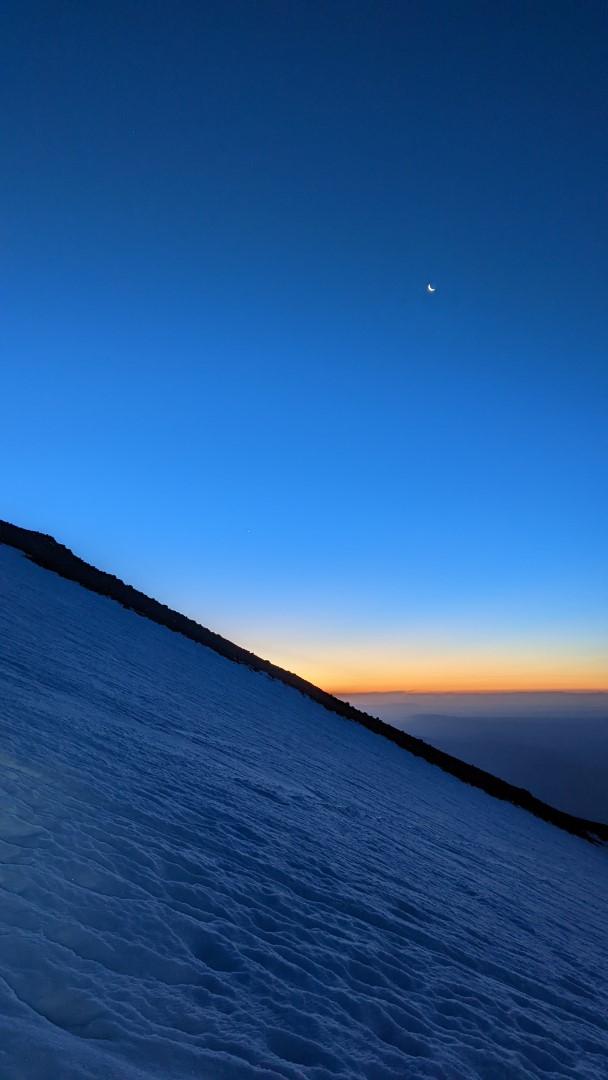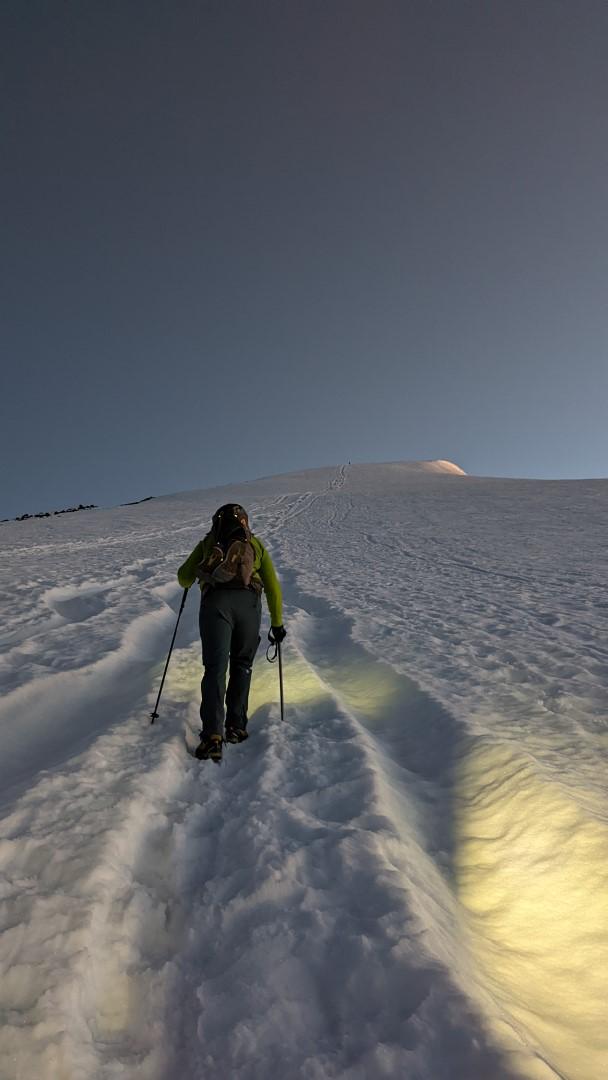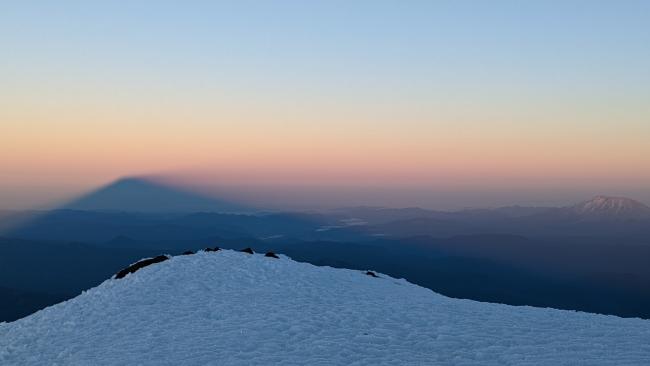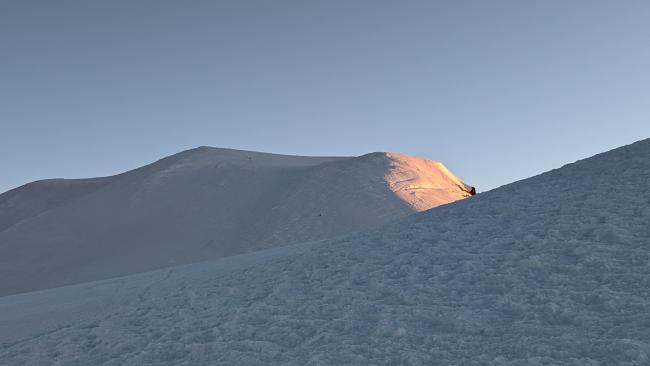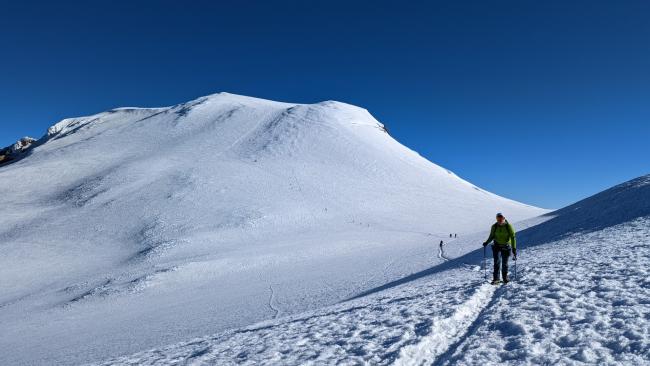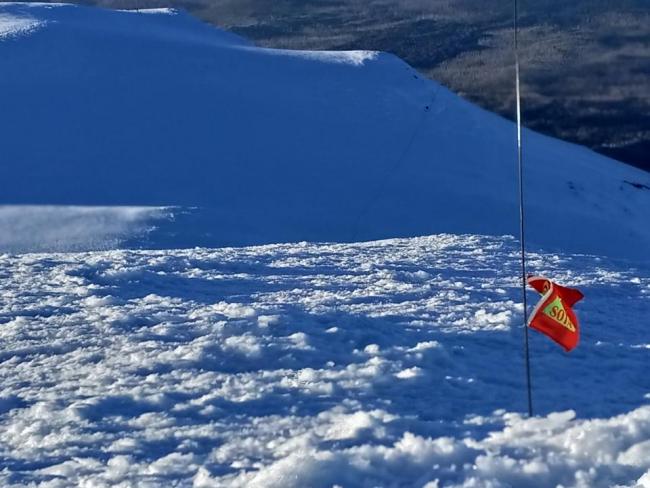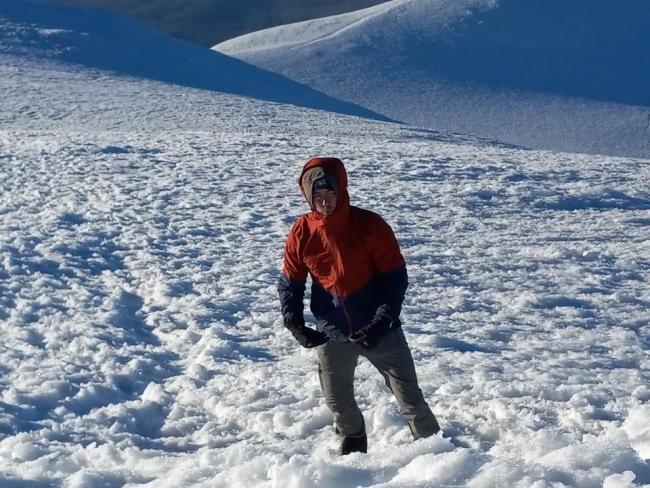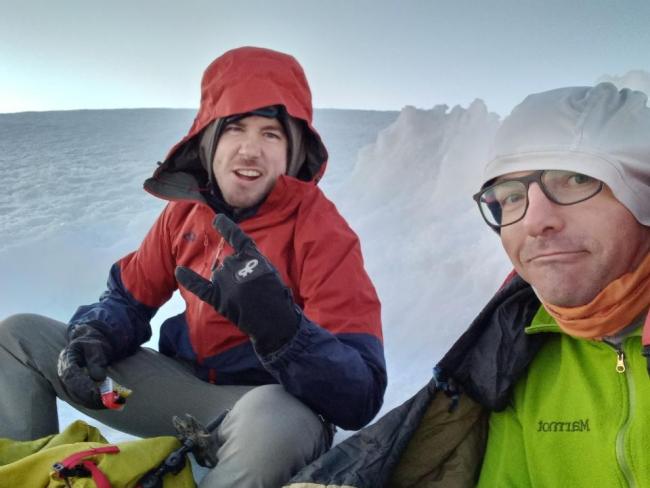Mt Adams in summer is a popular climb and has variable conditions. Anyone attempting Adams should be familiar hiking with crampons and ice axe. Glissading skills will help and if you're new, you'll be an expert by the time you are down the mountain.
We opted for an early start of 12:20am due to crowds and warm temperatures forecast. We first started hitting snow about 2 miles in and were on consistent snow about 2.5 miles in. At 7300' we put crampons on for the first steep pitch of the hike. I'm not sure how this part of the trail is when the snow melts out, but we encountered some minor mixed climbing to gain the ridge.
As we continued up we tried to stay on snow as much as we could, but were forced to hike across some rock at lunch counter (~9500'). Here we got our ice axe out as it is a steep stairmaster to the false summit. For this section I recommend hiking with 1 trekking pole and 1 ice axe. We were able to follow good bootpack all the way to the false summit.
At the false summit we hunkered down in some dug out windbreaks to have some snacks before the final push to the summit. My climbing partner made the same mistake I made last year: warm forcast of low winds = didn't pack insulated layers or a hardshell. In the parking lot I convinced him to bring along his sleeping bag so he'd have something. This saved the hike for him and he'd wrap up in it whenever we'd stop.
From the false summit we followed the bootpack below Pikers Peak and headed up to the summit. People who caught the sunrise from summit were on the way down. I opted to lead us more on the ridge where the snow/ice ramps made for easy switchbacking. My partner let me go ahead so I could get started with radio. I summited just before 7am.
The summit had sustained 20mph winds (forecast was 5mph) with 30mph gusts. I managed to get a short mast & EFRW in the air and hunkered us down in a little bit of a wind break. My cell service was intermittent and I got on 146.58 without spotting. My first QSO was with ND7Y mobile driving towards his summit for the day. Without a spot on 2m I managed a number of contacts including two 150mi QSOs to central Oregon. After that I got on HF. I started on 40m cw, but got no takers. Guess I was too early for the "locals".
20m cw was a lot better and I was the first to log QSOs on the 20m band in the database. Strong signals all around, but some QSB started to come in towards the end of my run. There were still some weak stations, but my buddy was getting cold and it was time to wrap it up.
I got on 2m again and managed to get a spot out on 146.56 (there was some weird digital noise on .58) and got a few more contacts before quickly packing up.
It was still fairly icy on the summit, so we decided to hike down to the false summit in crampons. There we got ready for the glissading down. Crampons off, gaiters on, and my glissade diaper (now renamed "Scootie Bootie"). It was still faily early in the morning, so the first chutes were a bit icy and deep like a bobsled chute. It made for some mad braking to control the speed. Lower down the snow softened and made for some good glissading. The final chute (down from that first steep pitch) had steep walls on each side and was a glorious ride. So much fun!
We took shelter from the sun in some trees and switched out the ice axe for trekking poles. That and my summit beer that I didn't have time to enjoy on summit made the deproach not too bad. By the time we were back at the cars the temperature was up and we were glad to be off the mountain so early (back at the car just before 11am).
In total I had 21 QSOs (11 20m cw, 10 2m fm). 12mi round trip with 6900' gain: https://www.strava.com/activities/7522880526
Activation Video: https://youtu.be/ILdFHbMAfw0


